Perhaps I am biased because I did my PhD at this university, but last month’s Relating Systems Thinking and Design (RSD11) “Possibilities and Practices of Systemic Design” at the University of Brighton felt to me like the most ecologically engaged design conferences I have yet to attend. The RSD11 community are working in a wide variety of ideas and practices for systemic design. Often this work includes a focus on justice-oriented design for sustainable transitions. RSD11 included an impressive stream on confronting legacies of oppression. The systemic design research community (now formally established as the Systemic Design Association) has developed theories and practices over the last decade that are now being advocated by the UK Design Council as a design approach for Net Zero. There was so much good content I made some time to capture and share just a few moments, ideas, and reflections on key themes that I consider to be particularly relevant to current debates in design theory and education.

I will start with the Tony Fry, one of strongest voices on designing viable futures in an era of planetary crises. Fry emphasises that we must be careful about the definition of “sustainability” to build capacity to move beyond “sustaining the unsustainable” – which sadly characterises the defuturing work in much of the design industry today. Moving beyond defuturing practice will be done by “redesigning design” and depends on an expansive design practice and “informed futuring” based on critically and ecologically engaged design education.
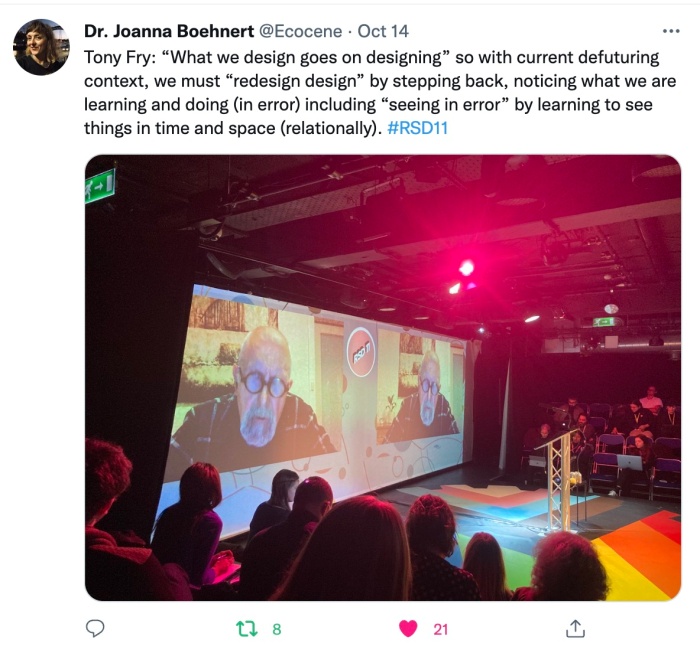
This design education theme emerged in Fry’s keynote in response to a question by System Design Association’s board chair Silvia Barbero. The popularity of this theme is evidenced in Dan Lockton’s popular tweet (below) – and as a topic of conversation in the final panel and plenary. Judging by nearly two hundred people on Twitter alone are concerned about the capacity of design education to deliver the types of knowledge needed to meet design challenges of the futures. We discussed the narrow and instrumental focus of attention in some design schools and how this impacts our attempts to advance responsible design, design for sustainability, social design, decolonising design, etc.
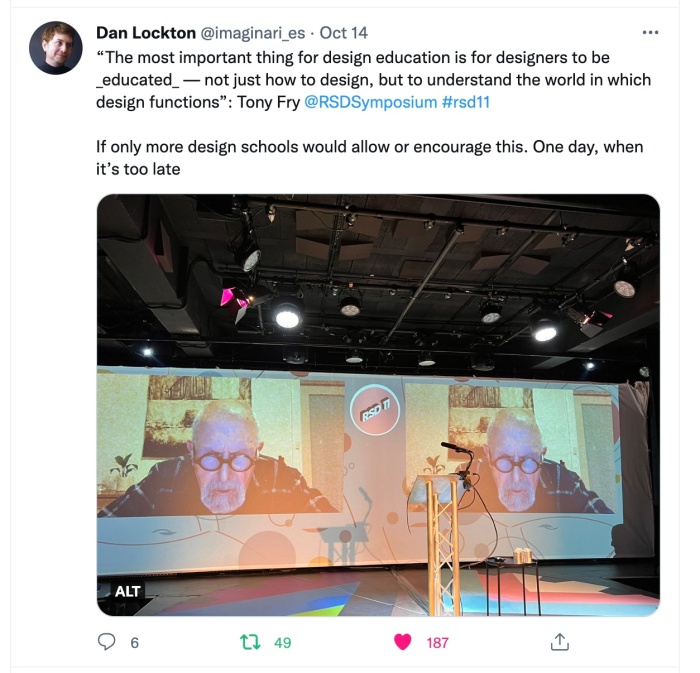
On the topic of sustainability, systemic design has recently been recognised as a means of addressing climate change by the UK Design Council in the Beyond Net Zero: A Systemic Design Approach report. Numerous sessions presented strategies for redirecting designed worlds for dramatically reduced GHG emissions (including my own mini-workshop).
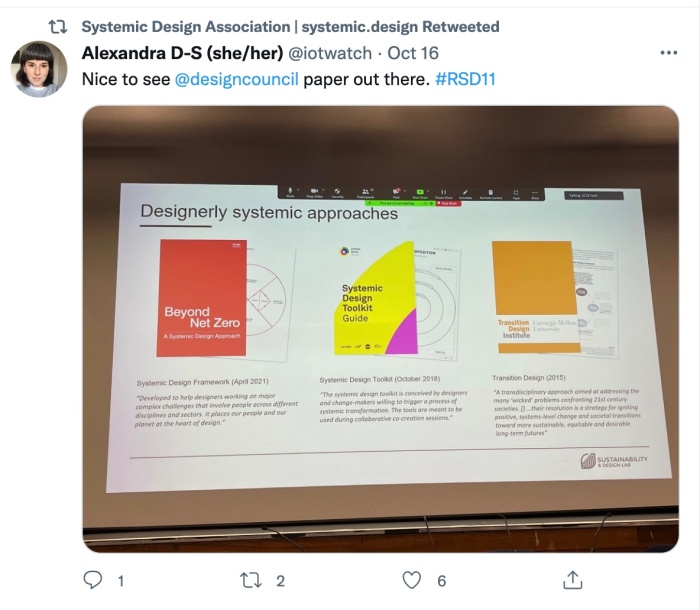
Design’s role in reproducing or even creating new discriminating structures and systems – or, alternatively, creating liberatory ones, was developed in the many sessions in the “Confronting Legacies of Oppression in Systemic Design” stream. Social justice oriented ideas have made impressive progress over the last five years in design theory and this was very much evident in these sessions. There was also time to consider some of the challenges this community faces now that our ideas are gaining some legitimacy in institutional spaces.
Josina Vink facilitated an intense fishbowl where tensions were discussed. One particularly troublesome issue that arose in this space and a problem that exists as real threat to both the justice-oriented design community and the sustainable design community, is the issue of appropriation.
Appropriation occurs where ideas generated in the margins of dominant discourses (often by marginalised groups) are extracted from the communities that have nurtured these ideas and practices, decontextualised, rinsed of their transformative potential, and used in ways that destroy the value of the idea or practice. Some examples of appropriation could be:
- Where people who are not engaged in a field (or in a particular social or environmental struggle) assume they can re-define key terms – and typically do this in ways that undermine the concept and its potential to enable social change.
- When an important sustainability or social justice concept is used in ways that undermines and/or neutralises it.
- When environmental ideas / social justice concepts are used in inappropriate ways to greenwash or whitewash unsustainable or oppressive, discriminatory, and unethical practices.
- When academics use the ideas and work of activist-scholars without citation.
- Where progressive ideas are used as statements of intent or vision statements with no attempt to put the ideas into practice.
The list above is a partial list of the various ways that the appropriation of the language of justice and sustainability devalues the work of scholars and activists who leading these movements. This list describes just a few ways appropriation can happen in academic spaces. Appropriation not only delays (or wrecks) progressive movements – but it also harms individuals working (often on the margins) for social change. Appropriation was a dominant theme in the fishbowl as those who have been involved with building capacity for social change in design witness the appropriation of their work.
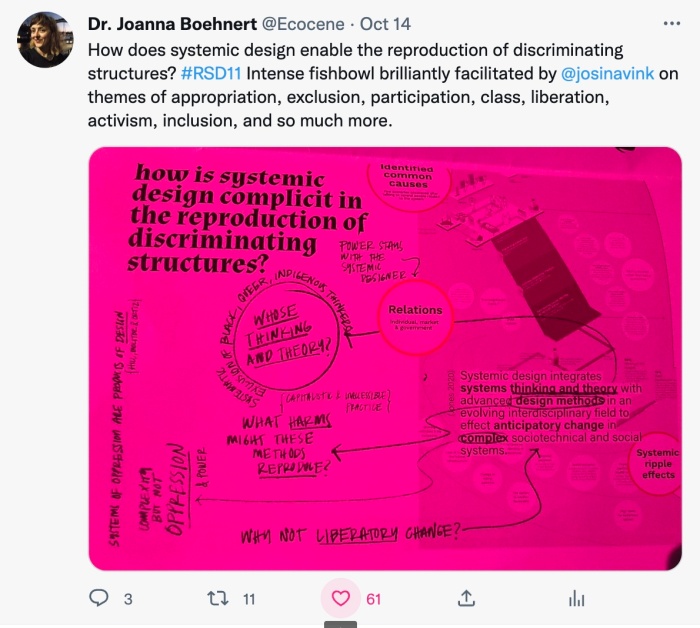
Also speaking to the theme of justice was Lesley-Ann Noel who described the work of moving beyond good intentions: “learning how to see oppression so we don’t reproduce it.” Noel highlighted Arturo Escobar’s version of the pluriverse in design theory and asked: “could design be guided by different design principles?” Noel presented her “positionality wheel” as a tool to prompt reflection and better understand power, agency, and relationality.

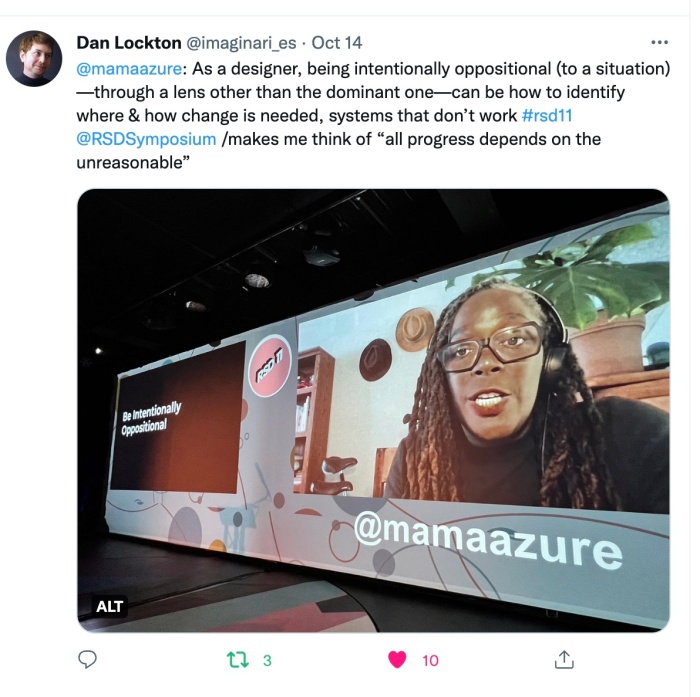
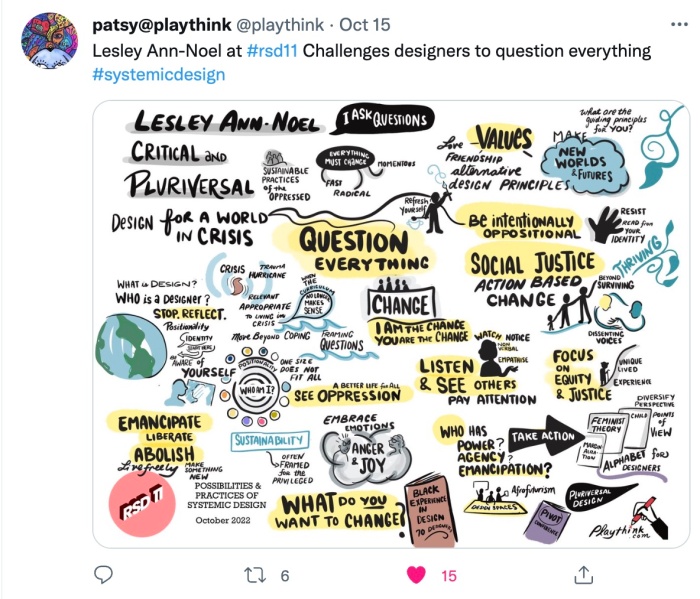
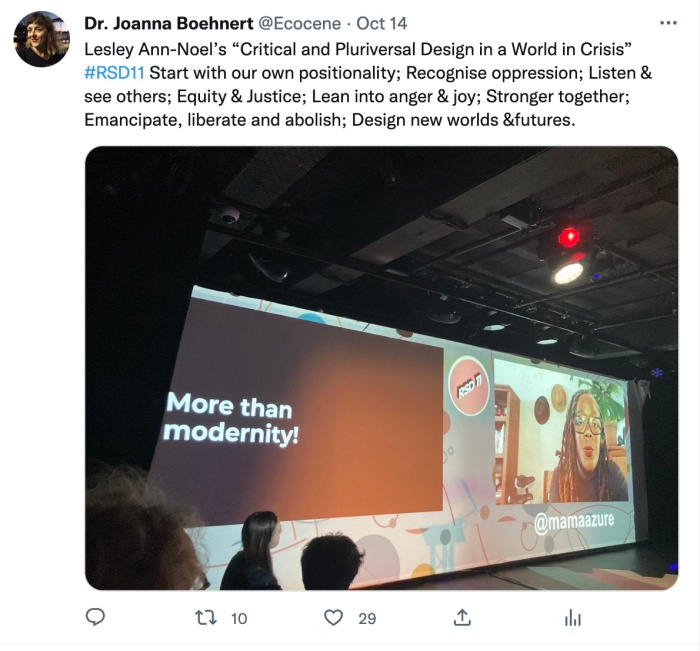

Another highlight was Mathilda Tham’s keynote, with her Earth Logic proposal, and metadesign practice. There were many helpful reflections here. The idea about the importance of self definition (see below) for feminist designers struck me as particularly helpful, and echos Noel’s ideas on positionality – especially for designers who are advocating on behalf of traditionally marginalised groups.
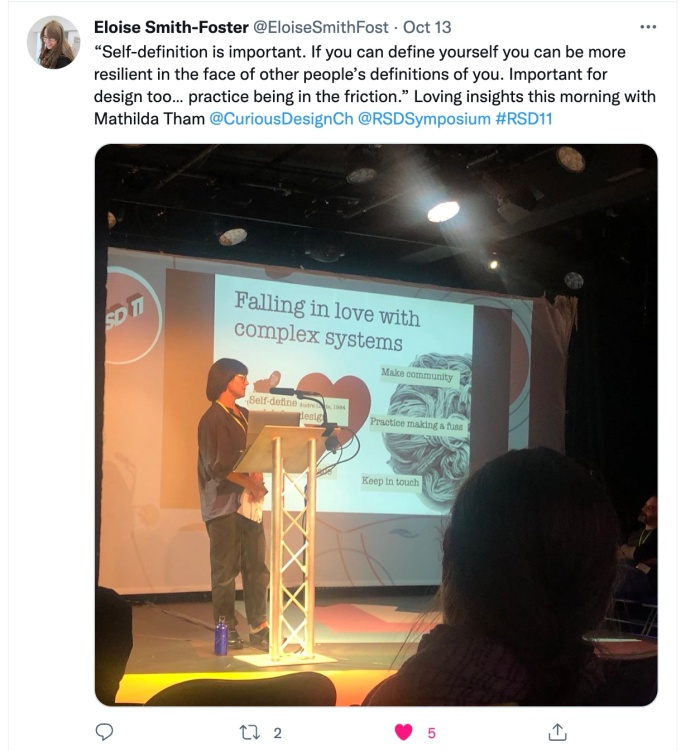
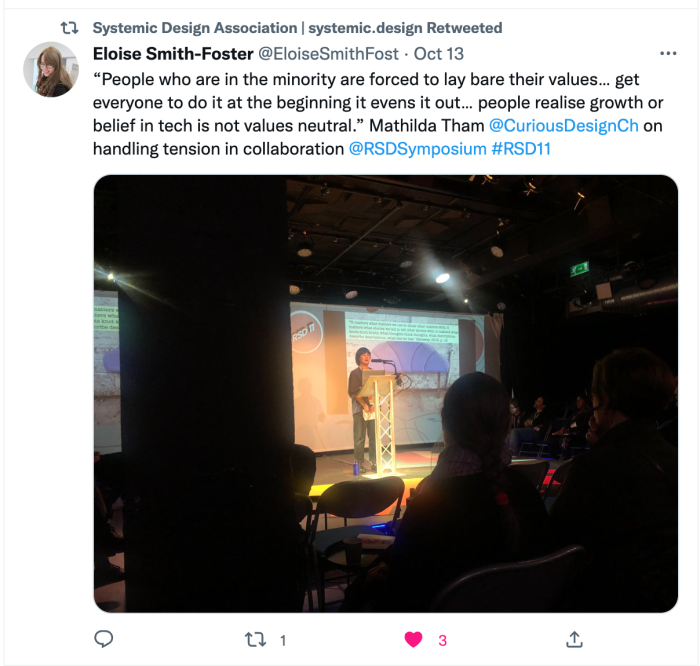
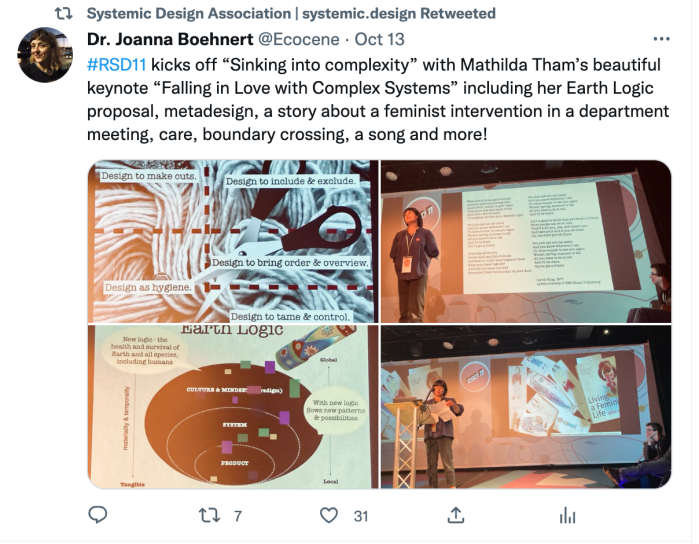
Danah Abdula described the contradictions of sustainability in graphic design. This keynote illustrated the various ways graphic design is so complicit with greenwashing – but also, potentially, able to help re-imagine and remake the material world. Abdula’s presentation illustrated the politics in communication design and how agency is diminished with uncritical approaches to communication design. The article Against Performative Positivity captures these themes in more detail.
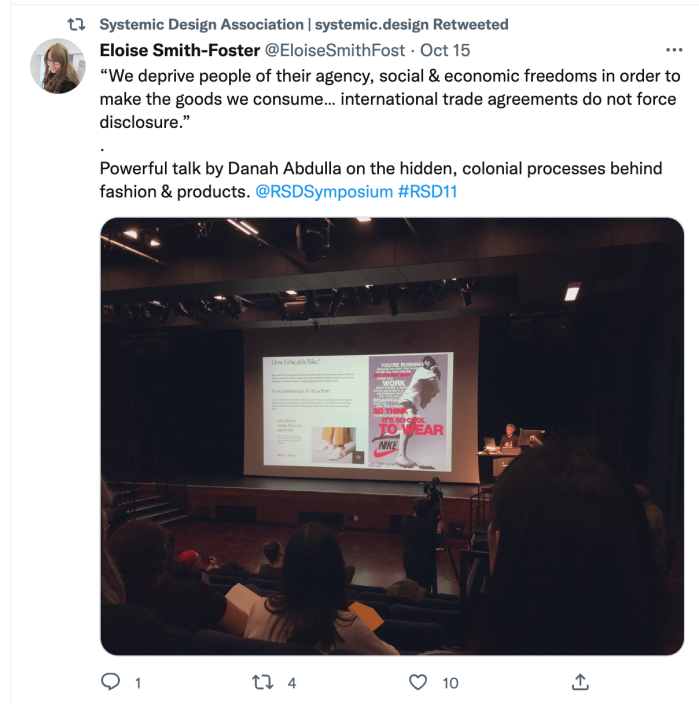
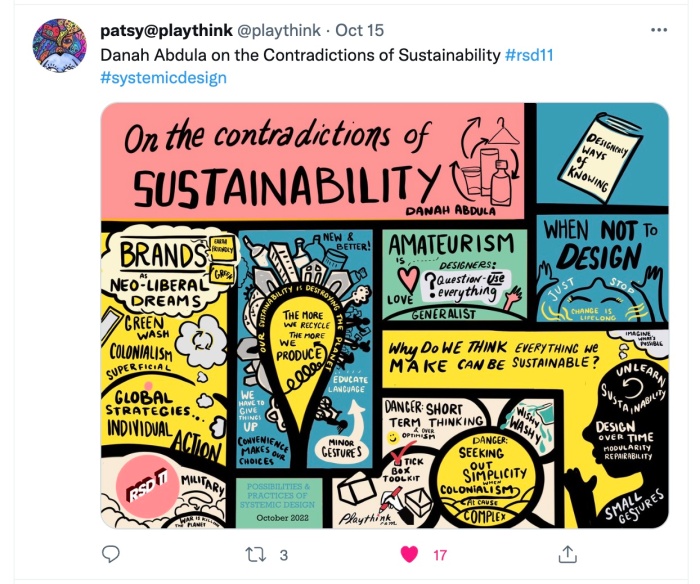
Peter Stoyko presented his new Pattern Atlas that I highly recommend checking out for those interested in systems and/or illustration. There are lots of creative commons resources here that can be freely used in systems mapping and other work.
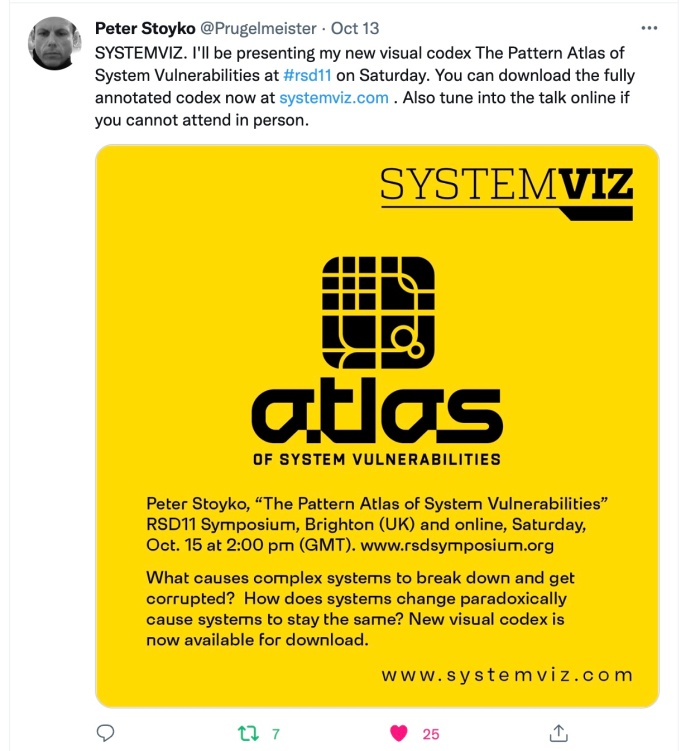
Also see Chantal Spencer’s paper on participatory research with insights on inclusive practices.
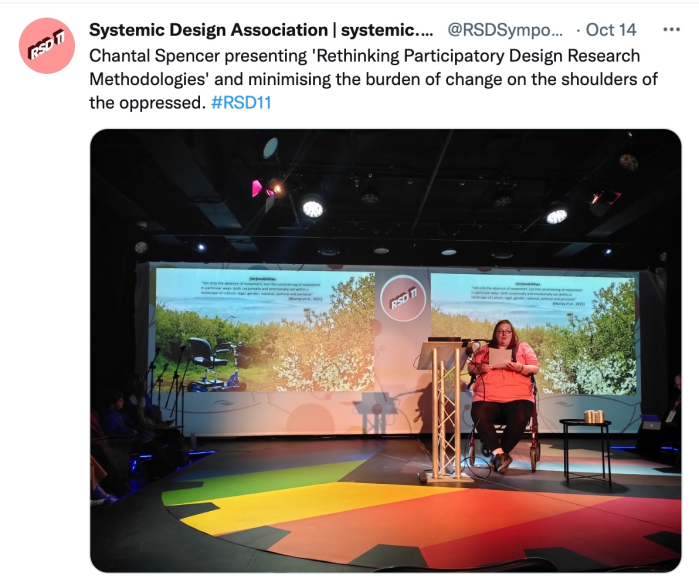
Finally, System Design Association’s Board Chair Silvia Barbero discussed the role of designers and systemic design in planetary health using the Planetary Health Framework. She played the “Nature Is Speaking” video below. I am sharing here as a good example of story telling on the environment.

For RSD11 colleagues, please forgive me but I can only capture a few moments of so much good content. This blog is very partial. I have not even made time to describe my own mini-workshops on net zero or a second one on design education. These were good too! I want to thank the whole team at the University of Brighton for hosting such a great event. Also thanks to everyone involved with building the Systemic Design Association from scratch over the last 11 years. I have learned to much from this community since I attended RSD1 is Olso – and this was probably the best conference yet. Papers and posters are on the SDA website.